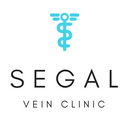What Causes Varicose Veins—and When Should You Treat Them?

What Are Varicose Veins?
Varicose veins are twisted, enlarged veins that often appear blue or purple and are most commonly found in the legs. They form when vein valves weaken or fail, causing blood to pool instead of flowing properly back to the heart.
For many people, varicose veins are more than a visual issue—they can lead to pain, swelling, and long-term discomfort if left untreated.

Common Causes
-
Age – As we age, veins lose elasticity and valves may not work as well.
-
Family history – If varicose veins run in your family, you're more likely to develop them.
-
Prolonged standing or sitting – Jobs that keep you on your feet—or in a chair—for hours can increase your risk.
-
Pregnancy – Hormonal changes and increased blood volume can put pressure on the veins.
-
Weight gain – Extra weight can increase pressure in leg veins.
When to Consider Treatment
While some people live with varicose veins without discomfort, others experience:
-
Aching, throbbing, or heaviness in the legs
-
Swelling in the ankles or feet
-
Itching or skin changes around the veins
-
Cramps—especially at night
If you're dealing with any of these symptoms—or simply feel self-conscious about your legs—now is the time to take action.
Treatment Options at Segal Vein Clinic
At Segal Vein Clinic, we offer quick, non-surgical treatments that are tailored to your needs. Many of our patients return to their regular activities the same day—and most treatments are covered by MSP with a referral from your doctor.
Ready to Love Your Legs Again?
Our experienced team has helped thousands across the Lower Mainland feel confident and comfortable again. With summer around the corner, now is the perfect time to treat your veins.
TAGS:

